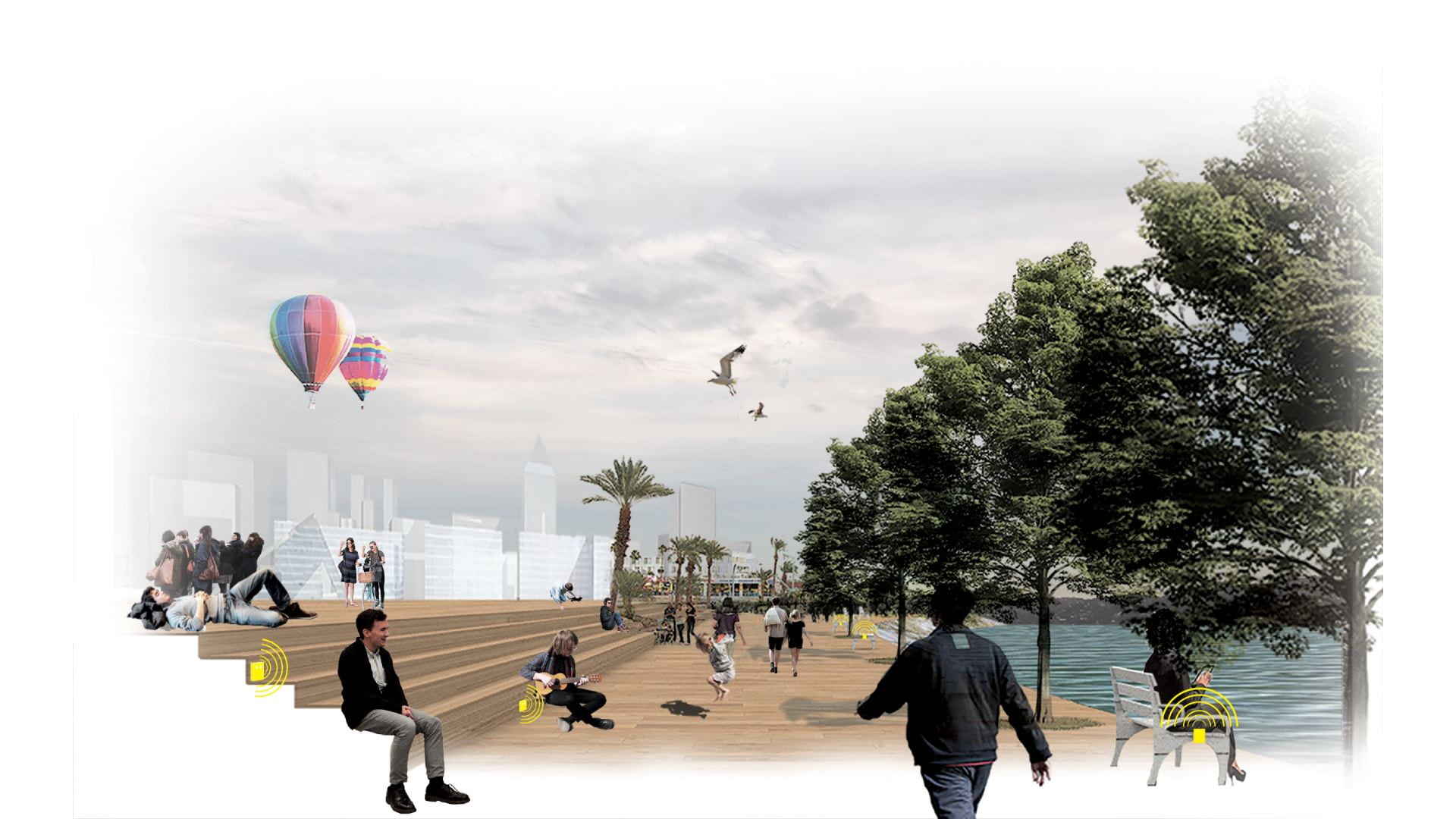Video Link: https://youtu.be/Kuz_Yg70DJs
In New York City parks, there are 43 bench seats per acre. However the relationship of benches and where people sit has not been measured and studied thoroughly. In most circumstances, as William Whyte stated, “people tend to sit most where there are places to sit.” Does this hold true in public spaces when people are given choices about location, type, and orientation of benches? Behavioral cues of people sitting on benches can provide many valuable information not only on understanding people’s patterns in public spaces, but it will also help architects and planners to effectively allocate sitting placements.
In order to understand sitting preferences and patterns of park users, our group collected sample data on people using the bench- es. On May 4th, we dispatched and installed ultrasonic sensors
on to three benches and collected data on people sitting on the benches. With collected data, our group analyzed 1) the use rate of seats and 2)the use pattern in terms of time, location, and types of seats.
Our initial research provided that utilization rate of benches were similar despite location and design of the bench. However, occupancy pattern was more uniform for the bench that was located in the middle of the park. Based on our finding from sensor data, we were able to understand that location of the bench played
a critical role in occupancy pattern of the bench. When we incorporate qualitative analysis into our findings, it becomes clear that locations of the bench is important for both utilization rate and occupation pattern.
However, due to limited number of sample size and duration and also accounting for margin of error, the current research would serve as a prototype for further studies. Our initial analysis will pro- vide us a foundation for understanding people’s sitting behaviors in open/public spaces and allow us to improve our research methodology and approach. As mentioned, We will be able to further investigate on factors impacting the behavioral decision by broaden the scope and eliminating limitations we currently face for current project.
